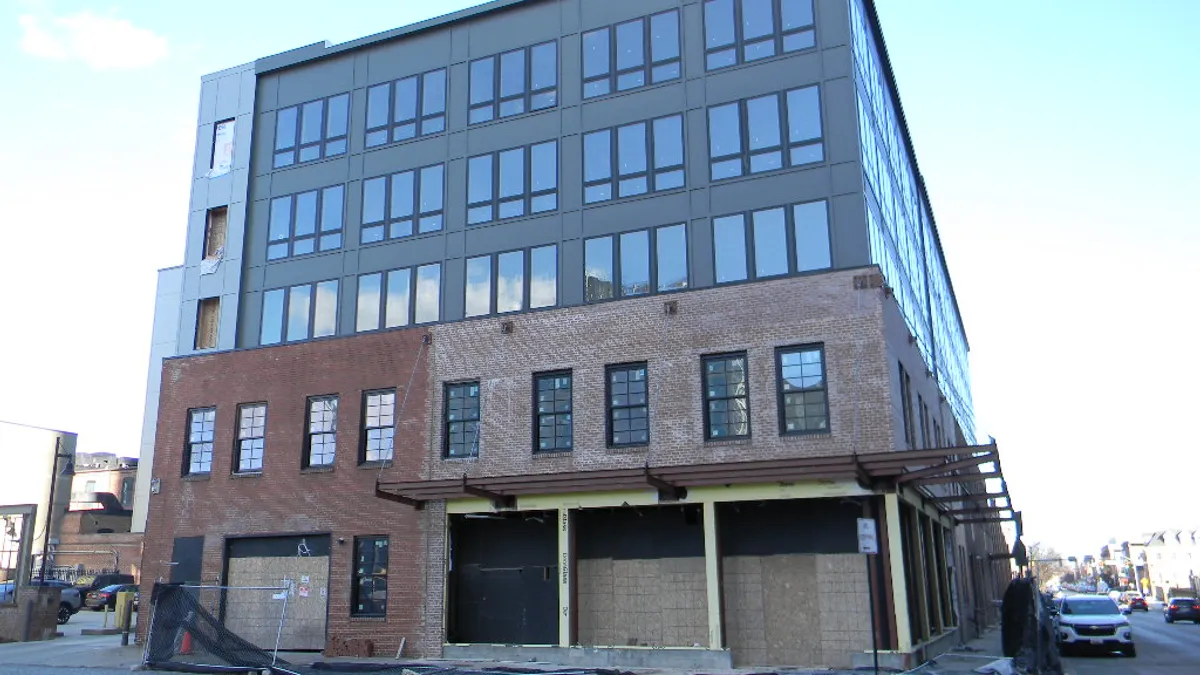It’s been nearly four years since the COVID-19 pandemic upended global supply chains, driving up prices and slowing availability of products and materials.
For U.S. construction firms, prices remain high due to ongoing materials shortages and high costs of logistics and labor, while global conflicts are adding in new levels of volatility and risk.
Indeed, construction input costs are up 38.7% compared to February 2020, according to an Associated Builders and Contractors analysis of Bureau of Labor Statistics data. Prices of unprocessed energy materials, natural gas and iron and steel have risen more than 50%.
Construction input prices ticked up 1% in January, the first overall price increase after three months of moderation. Overall construction costs remain 0.4% higher than a year ago, while nonresidential construction input prices gained 0.7% during the last 12 months.
Iron and steel costs went up more than 4% year over year in January, and stainless steel costs could rise further due to supply and demand dynamics. Supplies of nickel ore in Indonesia — the largest global producer of nickel, which is used to make stainless steel — could be depleted in six years, said Gregory Beischer, CEO of Alaska Energy Metals.
Meanwhile, demand for nickel is increasing because it’s used in electric vehicle battery production. The construction industry and stainless steel manufacturers will have to compete with EV producers for the same supply of nickel.
“It would not be unlikely to see stainless steel price jumps, which, in turn, would make construction projects more expensive,” Beischer said.
Global issues

Contractors are seeing some relief, though. Construction input prices for some materials like copper wire and cable and gypsum products have fallen since last January, per the ABC analysis. Costs for plastic and resin-based products, which were “through the roof” during the pandemic, are beginning to normalize, according to Brent Thielman, managing director and senior research analyst at national investment banking firm D.A. Davidson & Co.
“Prices are coming down from those extraordinary levels of a year or two ago, but they’re not back to what we've seen pre-pandemic,” Thielman said.
Nevertheless, global issues will likely keep the cost of some materials elevated. The latest Israel-Hamas war could affect prices, availability and lead times of various imported materials. Firms in Europe initially bore the brunt of the increases, but the effects will likely trickle down to U.S.-based firms due to the global nature of construction supply chains, said Maria Davidson, founder and CEO of Kojo, a tech company focused on the materials supply chain for the construction industry.
In addition, many transportation providers are rerouting around the Red Sea, which has created a surge in ocean shipping rates, adding yet another cost increase to contractors’ books.
“Transportation is an enormous piece of the cost,” Davidson said.
Davidson’s advice to contractors facing high prices is to have a competitive quote process and system to track bids, along with plans to ensure materials will be delivered when and where they need them.
Lengthy lead times
In addition to paying more for some products and materials, contractors are also waiting longer for them to be delivered. Pre-pandemic, materials such as steel and timber could be had within two to four weeks. Today, those same materials can take 12 to 16 weeks to arrive.

Electrical switchgear, generators and AV components have some of the longest lead times, at 42 to 60 weeks, according to Raylena Browning, vice president of preconstruction at Tulsa, Oklahoma-based Manhattan Construction Co.
HVAC equipment continues to have extended lead times, Thielman said, and electrical wire is difficult to source. Transformers can take as long as 52 weeks to arrive on a jobsite, according to Davidson, who expects to see limited availability for transformers and switchgear throughout 2024.
Construction supply chains are particularly susceptible to long lead times because of specialized materials and equipment. Alternative suppliers or domestic sources may not be available.
“When it comes to things like concrete or cement mix, there are real physical limitations on where you can order that from,” Davidson said.
Tight labor market
According to Browning, the construction industry’s biggest supply chain challenge is the availability of manpower, both skilled and unskilled.
The construction industry needs to recruit more than half a million workers to meet demand, according to Associated Builders and Contractors. Nearly 2 million construction workers are expected to leave their jobs this year. About 20% of them are at least 55 years old, meaning retirement could be imminent, and the industry needs younger workers to fill the pipeline.
“A lot of people coming out of high school don't see the construction industry as a sexy sector,” Davidson said.
But Davidson said the industry has started to flip the narrative, adjusting apprentice programs, adopting modern practices and recruiting with high schools.
“It's an incredibly steady profession,” Davidson said. “Pursuing a job in the trades is a really great career to build.”
Despite the sourcing challenges of the last few years, contractors are now more optimistic about their supply chains. More than half of respondents in a 2023 Turner & Townsend survey expect supply chains to improve, while just 1% said they would weaken.
“The industry has adjusted to the new reality,” said Thielman. “But it’s still delicate in some areas.”



















